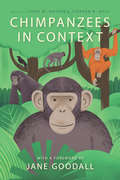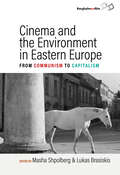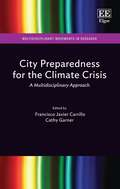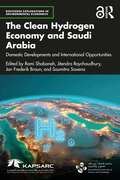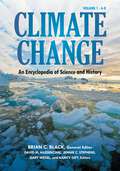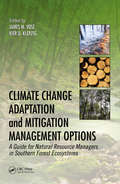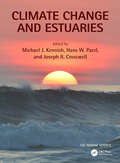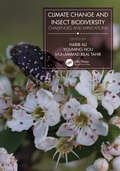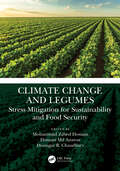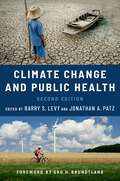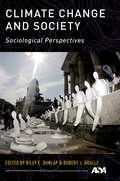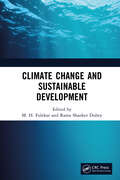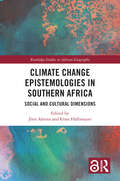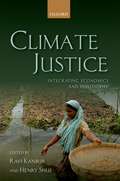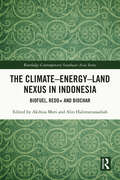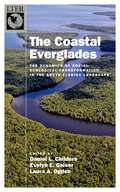- Table View
- List View
Chimpanzees in Context: A Comparative Perspective on Chimpanzee Behavior, Cognition, Conservation, and Welfare
The study of the chimpanzee, one of the human species’ closest relatives, has led scientists to exciting discoveries about evolution, behavior, and cognition over the past half century. In this book, rising and veteran scholars take a fascinating comparative approach to the culture, behavior, and cognition of both wild and captive chimpanzees. By seeking new perspectives in how the chimpanzee compares to other species, the scientists featured offer a richer understanding of the ways in which chimpanzees’ unique experiences shape their behavior. They also demonstrate how different methodologies provide different insights, how various cultural experiences influence our perspectives of chimpanzees, and how different ecologies in which chimpanzees live affect how they express themselves. After a foreword by Jane Goodall, the book features sections that examine chimpanzee life histories and developmental milestones, behavior, methods of study, animal communication, cooperation, communication, and tool use. The book ends with chapters that consider how we can apply contemporary knowledge of chimpanzees to enhance their care and conservation. Collectively, these chapters remind us of the importance of considering the social, ecological, and cognitive context of chimpanzee behavior, and how these contexts shape our comprehension of chimpanzees. Only by leveraging these powerful perspectives do we stand a chance at improving how we understand, care for, and protect this species.
CIGOS 2019, Innovation for Sustainable Infrastructure: Proceedings of the 5th International Conference on Geotechnics, Civil Engineering Works and Structures (Lecture Notes in Civil Engineering #54)
This book presents selected articles from the 5th International Conference on Geotechnics, Civil Engineering Works and Structures, held in Ha Noi, focusing on the theme “Innovation for Sustainable Infrastructure”, aiming to not only raise awareness of the vital importance of sustainability in infrastructure development but to also highlight the essential roles of innovation and technology in planning and building sustainable infrastructure. It provides an international platform for researchers, practitioners, policymakers and entrepreneurs to present their recent advances and to exchange knowledge and experience on various topics related to the theme of “Innovation for Sustainable Infrastructure”.
Cinema and the Environment in Eastern Europe: From Communism to Capitalism
The annexation of Eastern Europe to the Soviet sphere after World War II dramatically reshaped popular understandings of the natural environment. With an eco-critical approach, Cinema and the Environment in Eastern Europe breaks new ground in documenting how filmmakers increasingly saw cinema as a tool to critique the social and environmental damage of large-scale projects from socialist regimes and newly forming capitalist presences. New and established scholars with backgrounds across Europe, the United States, and Australia come together to reflect on how the cultural sphere has, and can still, play a role in redefining our relationship to nature.
Citizenship and Infrastructure: Practices and Identities of Citizens and the State (Routledge Studies in Urbanism and the City)
This book brings together insights from leading urban scholars and explicitly develops the connections between infrastructure and citizenship. It demonstrates the ways in which adopting an ‘infrastructural citizenship’ lens illuminates a broader understanding of the material and civic nature of urban life for both citizens and the state. Drawing on examples of housing, water, electricity and sanitation across Africa and Asia, chapters reveal the ways in which exploring citizenship through an infrastructural lens, and infrastructure through a citizenship lens, allows us to better understand, plan and govern city life. The book emphasises the importance of acknowledging and understanding the dialectic relationship between infrastructure and citizenship for urban theory and practice. This book will be a useful resource for researchers and students within Urban Studies, Geography, Development Studies, Planning, Politics, Architecture and Sociology.
City Preparedness for the Climate Crisis: A Multidisciplinary Approach (Multidisciplinary Movements in Research)
Exploring the ways that contemporary urban life takes the Holocene for granted, this multidisciplinary book warns that anthropogenic environmental impacts are on course to challenge the viability of most human settlements. It highlights how, despite increased warnings, most cities appear to be in denial of the potential impending catastrophes and remain ill-prepared to handle major disruptions. Chapters offer a critical appraisal of the end of an urban epoch: the Holocene city. Moving from more general aspects of urban vulnerability in the face of the Anthropocene, the book then looks at more specific issues and cases illustrating alternative adaptation pathways. It further analyses existing approaches, movements and networks for urban preparedness for the climate crisis, offering visualisations of the ways these can be improved, conceiving alternative futures and reinventing the city. A timely resource for this emerging topic, the book will be beneficial to urban studies, environmental science and development studies scholars. Practitioners in urban planning, design, management and evaluation will also find the critical case studies in the book particularly helpful.
The Clean Hydrogen Economy and Saudi Arabia: Domestic Developments and International Opportunities (Routledge Explorations in Environmental Economics)
This book provides a first-of-its-kind analysis of the emerging global hydrogen economy from the vantage point of one of the world’s biggest energy providers: Saudi Arabia. In 2021, and within the context of the Circular Carbon Economy framework, Saudi Arabia announced its goal to reach net-zero carbon emissions by 2060 and produce a substantial amount of clean hydrogen annually by 2030. The Kingdom is optimally situated geographically between the major demand markets in Europe and North Asia, from where it can leverage clean hydrogen exports as a potential tool to become a player of strategic importance and successfully diversify its economy under its Vision 2030 program. More broadly, the book charts a course for fossil fuel-exporting countries such as Saudi Arabia to carve a competitive position for themselves over the forthcoming decades using clean hydrogen as a catalyst for the energy transition.With contributions from global energy experts, the chapters in this book provide a multifaceted analysis of the "who," "what," "where," and "why" related to clean hydrogen development within and beyond Saudi Arabia. Collectively, the contributions analyze the countries and regions relevant to Saudi Arabia in terms of dedicated hydrogen policies, projects, and approaches that aim to incentivize production and demand in an increasingly carbon-constrained world. The book is a timely, unique and an indispensable resource for practitioners and students of energy, geopolitics, and climate policy working on hydrogen in academia, applied research, national government bodies, and international organizations.
Climate Change [4 volumes]: An Encyclopedia of Science and History [4 volumes]
This book provides a holistic consideration of climate change that goes beyond pure science, fleshing out the discussion by considering cultural, historical, and policy-driven aspects of this important issue.Climate change is a controversial topic that promises to reframe rudimentary ideas about our world and how we will live in it. The articles in Climate Change: An Encyclopedia of Science and History are designed to inform readers' decision making through the insight of scholars from around the world, each of whom brings a unique approach to this topic. The work goes beyond pure science to consider other important factors, weighing the cultural, historical, and policy-driven contributors to this issue. In addition, the book explores the ideas that have converged and evolved in order to clarify our current predicament. By considering climate change in this holistic fashion, this reference collection will prepare readers to consider the issue from every angle. Each article in the work is suitable for general readers, particularly students in high school and college, and is intended to inform and educate anyone about climate change, providing valuable information regarding the stages of mitigation and adaptation that are occurring all around us.
Climate Change Adaptation and Mitigation Management Options: A Guide for Natural Resource Managers in Southern Forest Ecosystems
Forest land managers face the challenges of preparing their forests for the impacts of climate change. However, climate change adds a new dimension to the task of developing and testing science-based management options to deal with the effects of stressors on forest ecosystems in the southern United States. The large spatial scale and complex inter
Climate Change and Estuaries (CRC Marine Science)
Climate change is having an increasing impact on coastal, estuarine, and marine environments worldwide. This book provides state-of-the-art coverage of climate change effects on estuarine ecosystems from local, regional, and global perspectives. With editors among the most noted international scholars in coastal ecology and estuarine science and contributors who are world-class in their fields, the chapters in this volume consist of comprehensive studies in coastal, estuarine and marine sciences, climate change, and coastal management and provide an extensive international collection of data in tabular, illustrated, and narrative formats useful for coastal scientists, planners, and managers. Comprised of three sections: (1) physical-chemical aspects; (2) biological aspects; and (3) management aspects, the book not only examines climatic and non-climatic drivers of change affecting coastal, estuarine, and marine environments but also their interactions and effects on populations of organisms, communities, habitats, and ecosystem structure and function. Pulling together today’s most salient issues and key literature advances for those concerned with coastal management, it allows the reader to see across direct and indirect interactions among disciplinary and ecosystem boundaries. Climate Change and Estuaries meets the research needs of climate scientists, estuarine and marine biologists, marine chemists, marine geologists, hydrologists, and coastal engineers, while students, professors, administrators, and other professionals will also find it an exhaustive reference.
Climate Change and Insect Biodiversity: Challenges and Implications
This up-to-date reference book discusses the effects of climate change on the biodiversity of insect pests. The changing climate and agricultural intensification practices impact negatively on insect biodiversity. The book explains the significance of insect pests for evaluating climatic impacts on a wide range of ecological systems. It covers the effect of climate change on pollinators and household and agricultural insect pests. It explains how climate-smart agriculture can enhance productivity and food security.FEATURES Reviews the effects of climate change on plant-insect interactions Includes topics such as insect biodiversity informatics and conservation Discusses food security, pest management, and beneficial and social insects Covers topics such as precision agriculture and climate-smart agriculture Provides insights on the relation between agriculture intensification and insect biodiversity This book is meant for scientists, researchers, and students working in the fields of agriculture, entomology, ecology, plant science, environmental biology, and biotechnology.
Climate Change and Legumes: Stress Mitigation for Sustainability and Food Security
Global climate change has created unprecedented challenges for human civilization due to its widespread adverse consequences, including a reduction in crop yield and threatening food security across the globe. Among the crop plants, legumes have great potential for ameliorating global warming since they can reduce carbon emissions by lowering reliance on the application of chemical fertilizers, by increasing nitrification and carbon sequestration in soil, and by providing protein-rich diets to both humans and livestock. This book identifies the extent of climate-induced stresses on legume plants and focuses on achieving food security through sustainable agricultural practices.This book compiles recent research findings and reviews on climate-related problems, the potential of legumes in ameliorating the impacts of climate change, as well as better management of agricultural land and practices for achieving environmental sustainability and food security.This book will serve as guidelines for scientists, agricultural practitioners, and policymakers working to achieve food security and better management of climate-induced stresses in agricultural interventions. It will also be useful as a reference book for researchers and students of both graduate and postgraduate levels. Furthermore, this book will provide enhanced knowledge about the mechanisms of yield and stress tolerance of legumes as well as developing climate-smart crops and improving cropping systems for a sustainable environment and food security. Features of the book Reviews trends of global climate change and its consequences for food security across the continents Identifies the challenges and scopes of cultivating legumes in achieving food security in the context of global climate change Focuses on the improvements of legume production through conservation approaches in agricultural practices and modern techniques, including omics-based breeding, biotechnology, genetic engineering, and rhizobium technology Discusses the sustainable amelioration options for soils affected by climate-induced stresses Cites examples of applications of rhizobium technologies in reducing greenhouse gas emission Describes pathways associated with yield, resistance, and tolerance of legumes to climate-induced stresses
Climate Change and Public Health
This second edition of Climate Change and Public Health comprehensively covers the health impacts of climate change, including heat-related and respiratory disorders, vectorborne and waterborne diseases, malnutrition, mental disorders, and violence. It provides a thorough understanding of the policymaking process and energy, transportation, and agriculture policies for mitigation. It covers health adaptation, sustainable built environments, and nature-based solutions to address climate change. Finally, it describes ways of strengthening public and political support, including communicating the health relevance of climate change, building movements, and promoting climate justice.
Climate Change and Society: Sociological Perspectives
Climate change is one of the most critical issues of the twenty-first century, presenting a major intellectual challenge to both the natural and social sciences. While there has been significant progress in natural science understanding of climate change, social science analyses have not been as fully developed. Climate Change and Society breaks new theoretical and empirical ground by presenting climate change as a thoroughly social phenomenon, embedded in behaviors, institutions, and cultural practices. This collection of essays summarizes existing approaches to understanding the social, economic, political, and cultural dimensions of climate change. From the factors that drive carbon emissions to those which influence societal responses to climate change, the volume provides a comprehensive overview of the social dimensions of climate change. An improved understanding of the complex relationship between climate change and society is essential for modifying ecologically harmful human behaviors and institutional practices, creating just and effective environmental policies, and developing a more sustainable future. Climate Change and Society provides a useful tool in efforts to integrate social science research, natural science research, and policymaking regarding climate change and sustainability. Produced by the American Sociological Association's Task Force on Sociology and Global Climate Change, this book presents a challenging shift from the standard climate change discourse, and offers a valuable resource for students, scholars, and professionals involved in climate change research and policy.
Climate Change and Sustainable Development
Climate Change and Sustainable Development covers the climatic and atmospheric changes, greenhouse gases and their impact on eco-system, biodiversity, water resources, agriculture and food security, human health, extreme weather and environment across two sections. The mitigation and adaptation strategies involving sustainable development is also illustrated including efficient technology, renewable energy, developmental activities control and so forth. Nanotechnology for sustainable development, forest protection, environment, social and economic sustainability and climate change policy planning of international bodies like UNFCC, UNDP, Kyoto protocol is also included. Features: Covers climate change fundamentals and its impact on different ecosystems and natural disasters Describes non-renewable energy aspects like fossil fuel, coal, oil, natural gas and so forth Explores sustainable development in terms of environment, social and economic aspects Includes species diversity and loss, agriculture productivity, water resources scarcity, health and environmental, rise in sea level and coastal area submergence Illustrates scientific hybridization of traditional ecological knowledge for enhancing climate change adaptation This book is aimed at graduate students and researchers in engineering and public policy, engineering management, sustainable engineering, renewable energy engineering, environmental engineering, and sustainability.
Climate Change Epistemologies in Southern Africa: Social and Cultural Dimensions (Routledge Studies in African Geography)
This book investigates the social and cultural dimensions of climate change in Southern Africa, focusing on how knowledge about climate change is conceived and conveyed. Despite contributing very little to the global production of emissions, the African continent looks set to be the hardest hit by climate change. Adopting a decolonial perspective, this book argues that knowledge and discourse about climate change has largely disregarded African epistemologies, leading to inequalities in knowledge systems. Only by considering regionally specific forms of conceptualizing, perceiving, and responding to climate change can these global problems be tackled. First exploring African epistemologies of climate change, the book then goes on to the social impacts of climate change, matters of climate justice, and finally institutional change and adaptation. Providing important insights into the social and cultural perception and communication of climate change in Africa, this book will be of interest to researchers from across the fields of African studies, sociology, anthropology, philosophy, political science, climate change, and geography.
Climate Graph - Cool, temperate maritime: Shannon, Ireland (Large Print)
This is a graph showing temperature and precipitation over the period of a year in Shannon. There is a locator dot shown, which will be at the top left of the page when the image is the right way up. There are vertical bars indicating average monthly rainfall and a thick dashed line going across the page showing the average monthly temperature. On the left of the page is a vertical scale marked in degrees Centigrade starting from zero at the bottom. It is marked at every five degrees and labelled at every ten degrees. Running right across the page are fine horizontal grid lines. The thick dashed line representing the temperature can be found at the bottom left of the page sloping up and down to right. Across the bottom of the page are twelve labelled vertical bars showing the rainfall for each month of the year, starting with January on the left. To allow sufficient space, the braille labels are uncapitalised. At the far right of the page is a vertical scale of precipitation in millimetres, starting with zero at the bottom. This is marked every 25 mm and labelled every 50 mm.
Climate Graph - Cool, temperate maritime: Shannon, Ireland (UEB Contracted)
This is a graph showing temperature and precipitation over the period of a year in Shannon. There is a locator dot shown, which will be at the top left of the page when the image is the right way up. There are vertical bars indicating average monthly rainfall and a thick dashed line going across the page showing the average monthly temperature. On the left of the page is a vertical scale marked in degrees Centigrade starting from zero at the bottom. It is marked at every five degrees and labelled at every ten degrees. Running right across the page are fine horizontal grid lines. The thick dashed line representing the temperature can be found at the bottom left of the page sloping up and down to right. Across the bottom of the page are twelve labelled vertical bars showing the rainfall for each month of the year, starting with January on the left. To allow sufficient space, the braille labels are uncapitalised. At the far right of the page is a vertical scale of precipitation in millimetres, starting with zero at the bottom. This is marked every 25 mm and labelled every 50 mm.
Climate Graph - Cool, temperate maritime: Shannon, Ireland (UEB Uncontracted)
This is a graph showing temperature and precipitation over the period of a year in Shannon. There is a locator dot shown, which will be at the top left of the page when the image is the right way up. There are vertical bars indicating average monthly rainfall and a thick dashed line going across the page showing the average monthly temperature. On the left of the page is a vertical scale marked in degrees Centigrade starting from zero at the bottom. It is marked at every five degrees and labelled at every ten degrees. Running right across the page are fine horizontal grid lines. The thick dashed line representing the temperature can be found at the bottom left of the page sloping up and down to right. Across the bottom of the page are twelve labelled vertical bars showing the rainfall for each month of the year, starting with January on the left. To allow sufficient space, the braille labels are uncapitalised. At the far right of the page is a vertical scale of precipitation in millimetres, starting with zero at the bottom. This is marked every 25 mm and labelled every 50 mm.
Climate Graph- Mediterranean: Rome, Italy (Large Print)
This is a graph showing temperature and precipitation over the period of a year in Rome. There is a locator dot shown, which will be at the top left of the page when the image is the right way up. There are vertical bars indicating average monthly rainfall and a thick dashed line going across the page showing the average monthly temperature. On the left of the page is a vertical scale marked in degrees Centigrade starting from zero at the bottom. It is marked at every five degrees and labelled at every ten degrees. Running right across the page are fine horizontal grid lines. The thick dashed line representing the temperature can be found at the bottom left of the page sloping up and down to right. Across the bottom of the page are twelve labelled vertical bars showing the rainfall for each month of the year, starting with January on the left. To allow sufficient space, the braille labels are uncapitalised. At the far right of the page is a vertical scale of precipitation in millimetres, starting with zero at the bottom. This is marked every 25 mm and labelled every 50 mm.
Climate Graph- Mediterranean: Rome, Italy (UEB Contracted)
This is a graph showing temperature and precipitation over the period of a year in Rome. There is a locator dot shown, which will be at the top left of the page when the image is the right way up. There are vertical bars indicating average monthly rainfall and a thick dashed line going across the page showing the average monthly temperature. On the left of the page is a vertical scale marked in degrees Centigrade starting from zero at the bottom. It is marked at every five degrees and labelled at every ten degrees. Running right across the page are fine horizontal grid lines. The thick dashed line representing the temperature can be found at the bottom left of the page sloping up and down to right. Across the bottom of the page are twelve labelled vertical bars showing the rainfall for each month of the year, starting with January on the left. To allow sufficient space, the braille labels are uncapitalised. At the far right of the page is a vertical scale of precipitation in millimetres, starting with zero at the bottom. This is marked every 25 mm and labelled every 50 mm.
Climate Graph- Mediterranean: Rome, Italy (UEB Uncontracted)
This is a graph showing temperature and precipitation over the period of a year in Rome. There is a locator dot shown, which will be at the top left of the page when the image is the right way up. There are vertical bars indicating average monthly rainfall and a thick dashed line going across the page showing the average monthly temperature. On the left of the page is a vertical scale marked in degrees Centigrade starting from zero at the bottom. It is marked at every five degrees and labelled at every ten degrees. Running right across the page are fine horizontal grid lines. The thick dashed line representing the temperature can be found at the bottom left of the page sloping up and down to right. Across the bottom of the page are twelve labelled vertical bars showing the rainfall for each month of the year, starting with January on the left. To allow sufficient space, the braille labels are uncapitalised. At the far right of the page is a vertical scale of precipitation in millimetres, starting with zero at the bottom. This is marked every 25 mm and labelled every 50 mm.
Climate Justice: Integrating Economics and Philosophy
Climate justice requires sharing the burdens and benefits of climate change and its resolution equitably and fairly. It brings together justice between generations and justice within generations. In particular it requires that attempts to address justice between generations through various interventions designed to curb greenhouse emissions today do not end up creating injustice in our time by hurting the currently poor and vulnerable. The United Nations Sustainable Development Goals (SDGs) summit in September 2015, and the Conference of Parties (COP) to the Framework Convention on Climate Change in Paris in December 2015, brought climate change and its development impact centre stage in global discussions. In the run up to Paris, Mary Robinson, former President of Ireland and UN Secretary General's Special Envoy for Climate Change, instituted the Climate Justice Dialogue "to mobilize political will and creative thinking to shape an ambitious and just international climate agreement in 2015". The editors of this volume, an economist and a philosopher, served on the High Level Advisory Committee of the Climate Justice Dialogue. They noted the overlap and mutual enforcement between the economic and philosophical discourses on climate justice. But they also noted the great need for these strands to come together to support the public and policy discourse. Climate Justice: Integrating Economics and Philosophy is the result. Bringing together contributions from economists and philosophers, Climate Justice illustrates the different approaches, how they overlap and interact, and what they have already learned from each other and might still have to learn.
The Climate–Energy–Land Nexus in Indonesia: Biofuel, REDD+ and biochar (Routledge Contemporary Southeast Asia Series)
This book extends the framework of the climate-energy-land nexus to elucidate political, economic, social, and institutional factors and causal mechanisms that stringent climate targets bring about, rather than mitigate a disproportional heavy burden on the forest sector in Indonesia. Assessing climate, energy, agricultural, forest, and transmigration policies, and REDD+ and biochar solutions through a multidisciplinary approach, ranging from biological, agricultural, technological, economic, and institutional lenses, the book identifies the political-economic and socio-technical regimes that cause the crosssectoral transfer of responsibility for greenhouse gas emissions to palm-oil-based biofuel, imposing an excess burden on the forest sector and accelerating indirect land-use change. It also proposes possible countermeasures for agricultural and forest sectors, reconfirming that technical applications and integrated policymaking should trigger the socioeconomic changes that will make transformative change happen in Indonesia. As an analysis of the success, or otherwise, of stringent climate targets, policies, and technological and non-technological measures on the reduction of greenhouse gases, this book will be of great interest to students and scholars in the fields of environment & sustainability, Asian studies, energy, environment and agriculture, forestry, and agriculture & environmental sciences. It will also appeal to practitioners and policymakers tackling net-zero emissions and land and forest governance.
The Coastal Everglades: The Dynamics of Social-Ecological Transformation in the South Florida Landscape (The Long-Term Ecological Research Network Series)
The Coastal Everglades presents a broad overview and synthesis of research on the coastal Everglades, a region that includes Everglades National Park, adjacent managed wetlands, and agricultural and urbanizing communities. Contributors for this volume are all collaborators on the Florida Coastal Everglades Long-Term Ecological Research Program (FCE LTER). The FCE LTER began in 2000 with a focus on understanding key ecosystem processes in the coastal Everglades, while also developing a platform for and linkages to related work conducted by an active and diverse Everglades research community. The program is based at Florida International University in Miami, but includes scientists and students from numerous other universities as well as staff scientists at key resource management agencies, including Everglades National Park and the South Florida Water Management District. Though the Everglades landscape spans nearly a third of the State of Florida, the focus on the coastal Everglades has allowed the contributors to examine key questions in social-ecological science in the context of ongoing restoration initiatives. As this book demonstrates, the long-term research of the FCE LTER has facilitated a better understanding of the roles of sea level rise, water management practices, urban and agricultural development, and other disturbances, such as fires and storms, on the past and future dynamics of this unique coastal environment. By comparing properties of the Everglades with other subtropical and tropical wetlands, the book challenges ideas of novelty while revealing properties of ecosystems at the ends of gradients that are often ignored. It also provides insights from, and encouragement for, long-term collaborative studies that inform resource management in similarly threatened coastal wetland landscapes.
Collective Sustainable Consumption: The Case of Poland (ISSN)
In the face of climate change and resulting environmental and social crises, sustainable consumption has become a widely discussed issue and a key plank of the UN’s Sustainable Development Goals (SDGs). The majority of the sustainable consumption research uses the SDG framework, but this only serves to reinforce an individualistic, efficiency-based approach and it does not sufficiently cover the specific situation of transition economies. In contrast, this volume promotes a collective approach to sustainable consumption, and combines general theoretical issues with empirical examples from the Polish economy. The first part of the book presents a theoretical approach to collective consumption which has the core concepts of justice and human nature at its heart. This approach emphasises the role of collective rationality and categorises aspects of sustainable consumption as a common and public good. The second part investigates diversified aspects of sustainability, including socio-economic inequalities as barriers to sustainable consumption, consumer sovereignty in the context of current legal regulations, and the impact on employees of changes to the types and conditions of work. It also examines the sharing economy and the legal conditions of its development. The third part adopts a political perspective focusing on the state policies enhancing the role of investment in public goods, analyses photovoltaic programmes which promote prosumption and indicates challenges to sustainability faced by many countries such as the energy crisis, sustainable finance, and cooperative platforms.This book will be of great interest to researchers and scholars interested in sustainability and consumption issues in economics, management, law, public administration, and political science.
